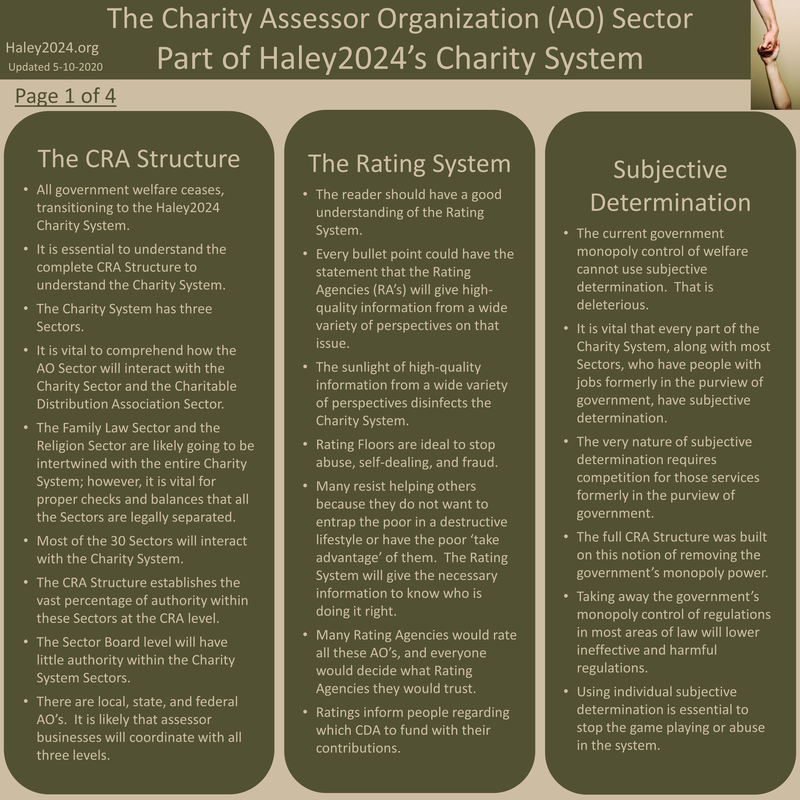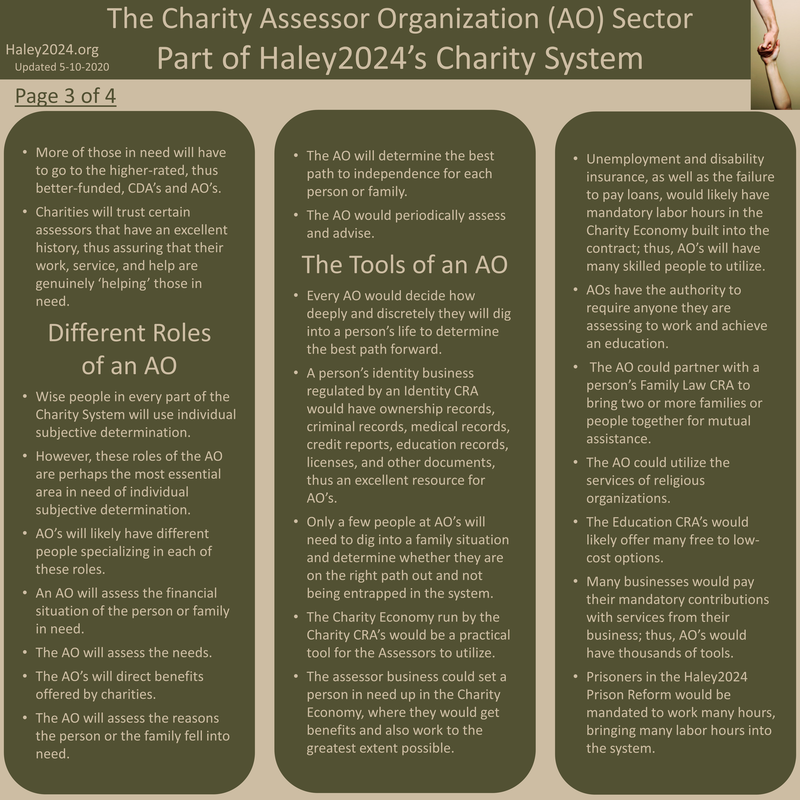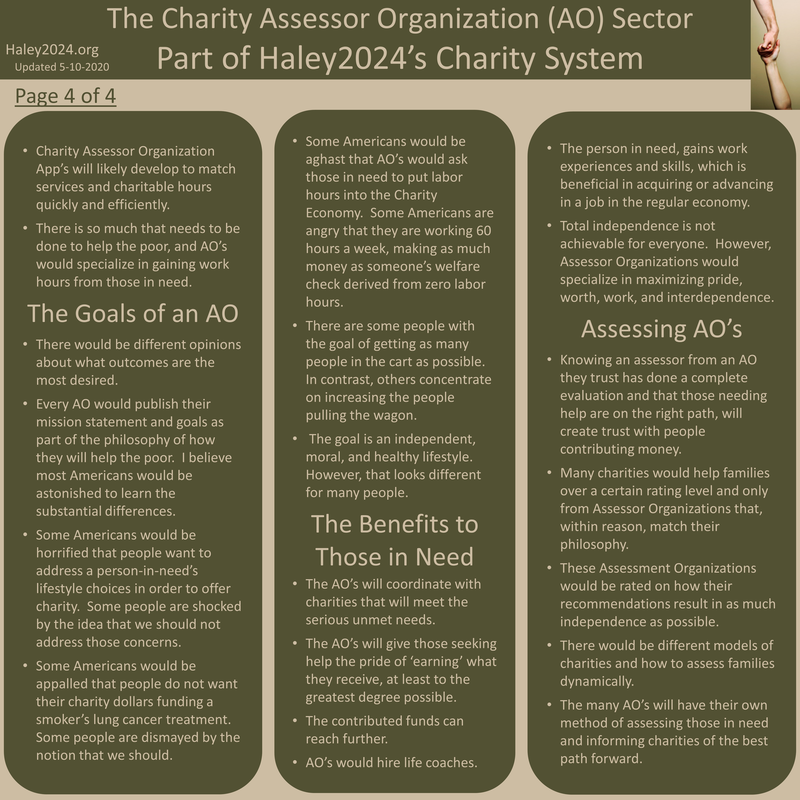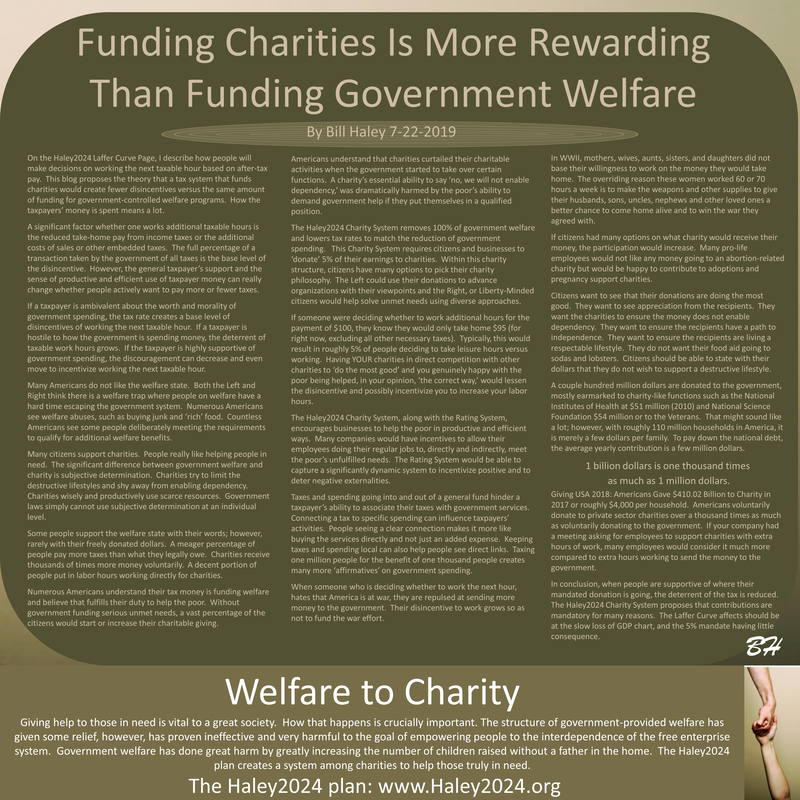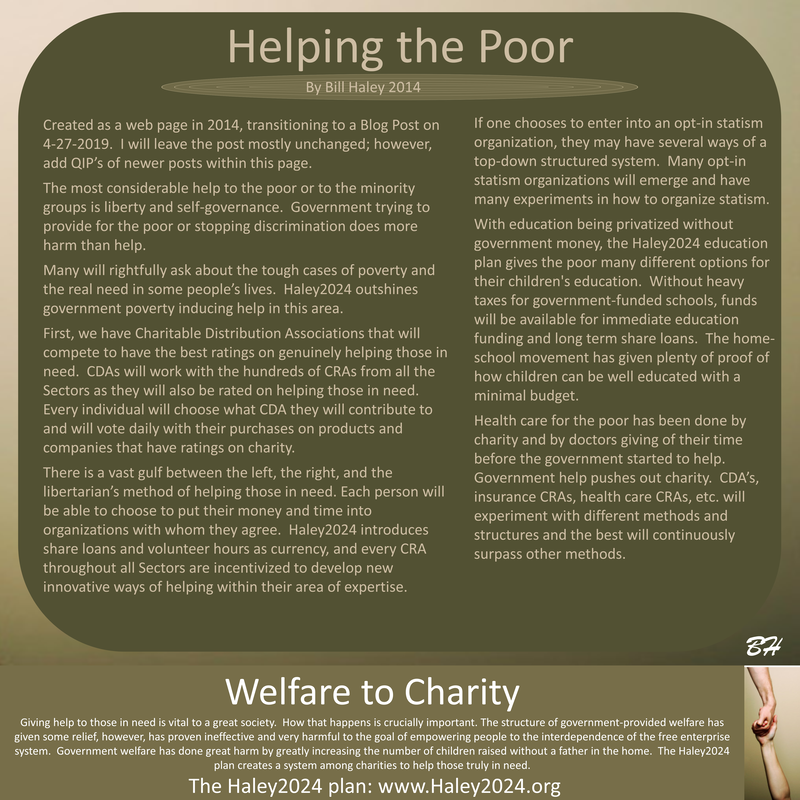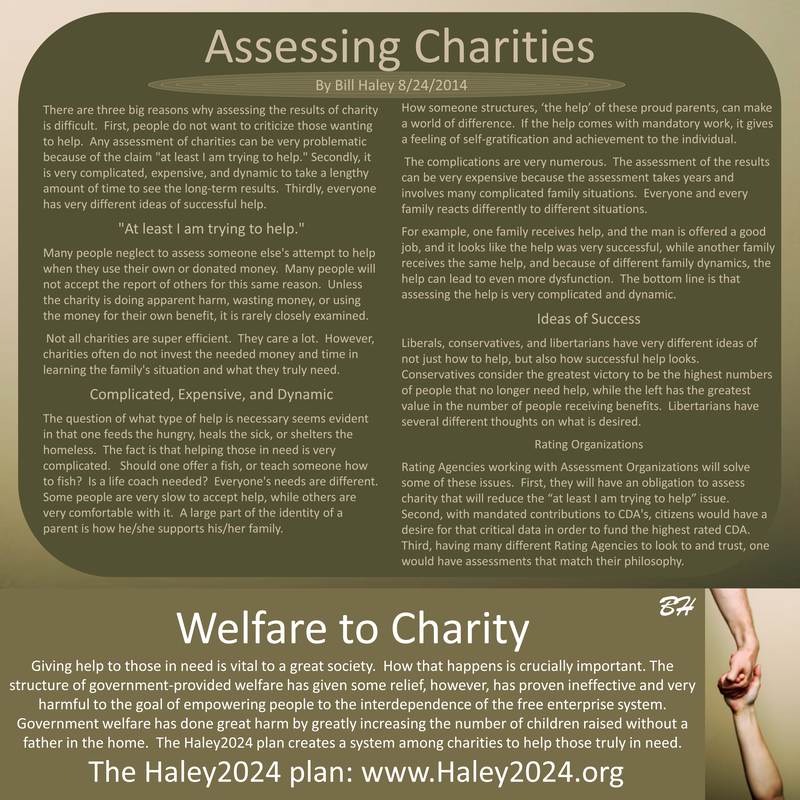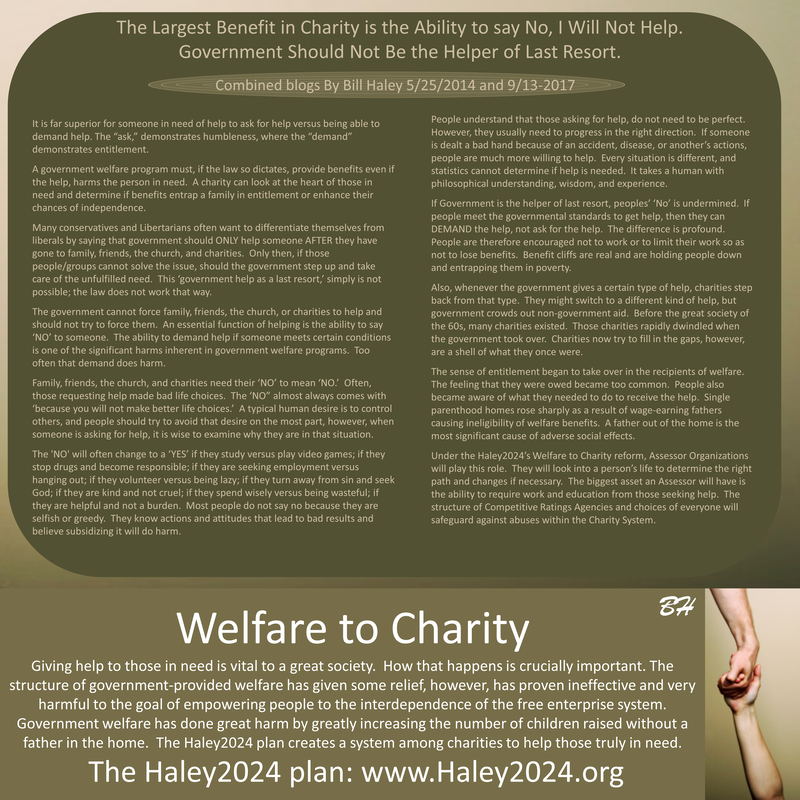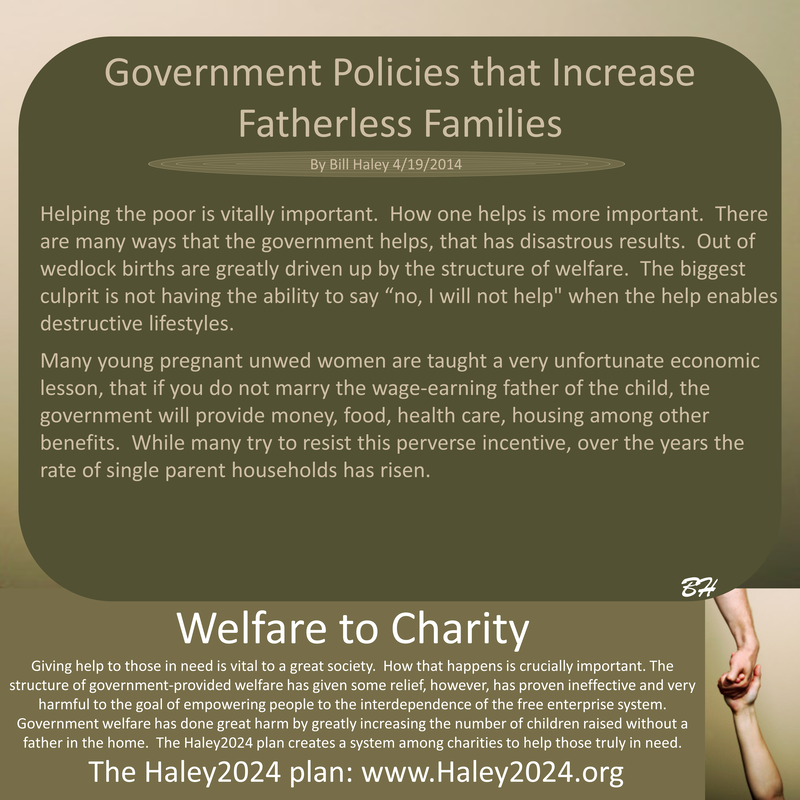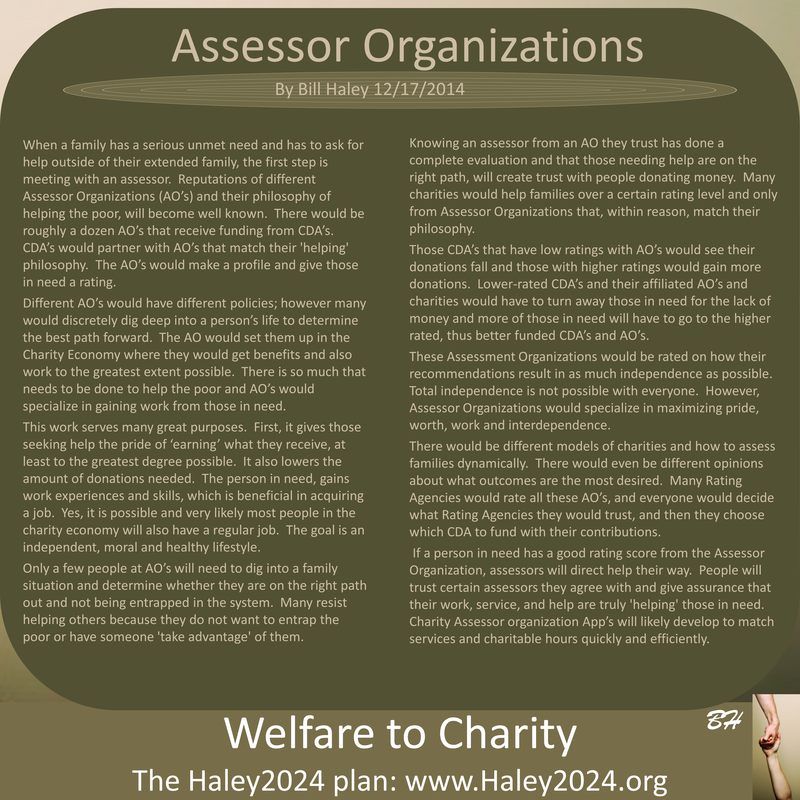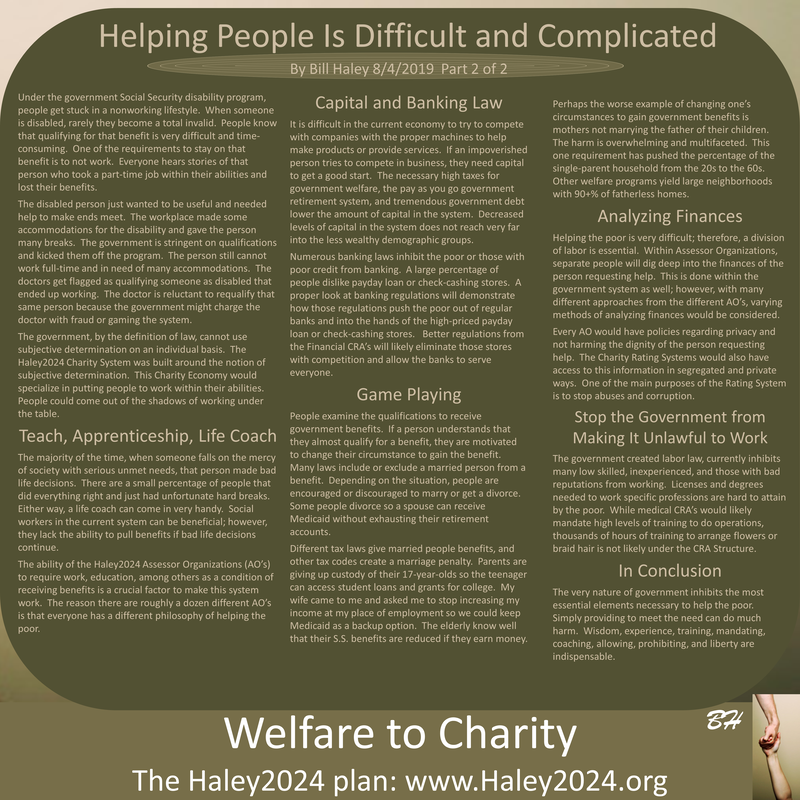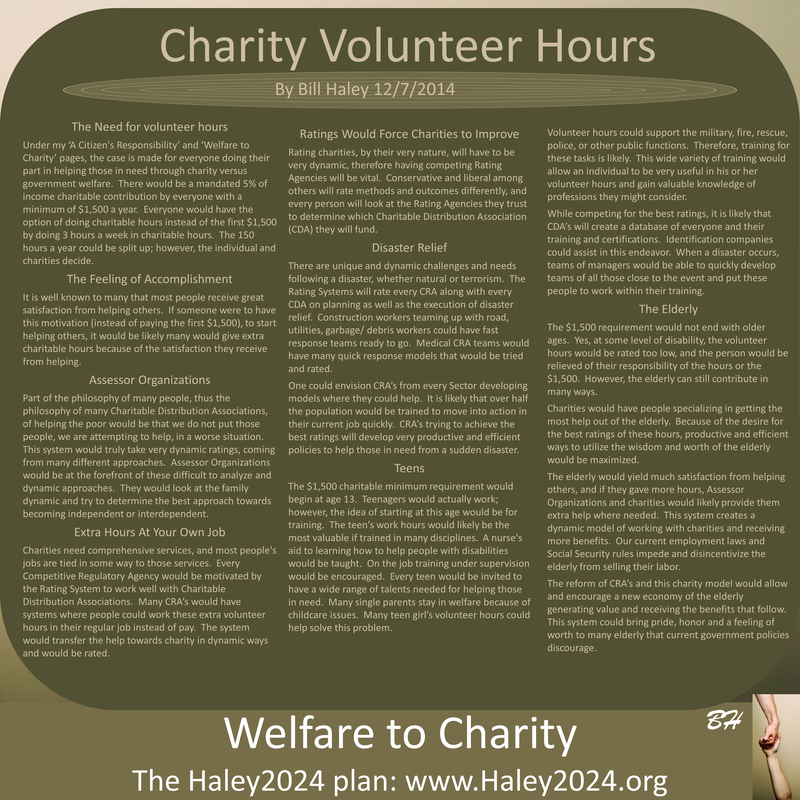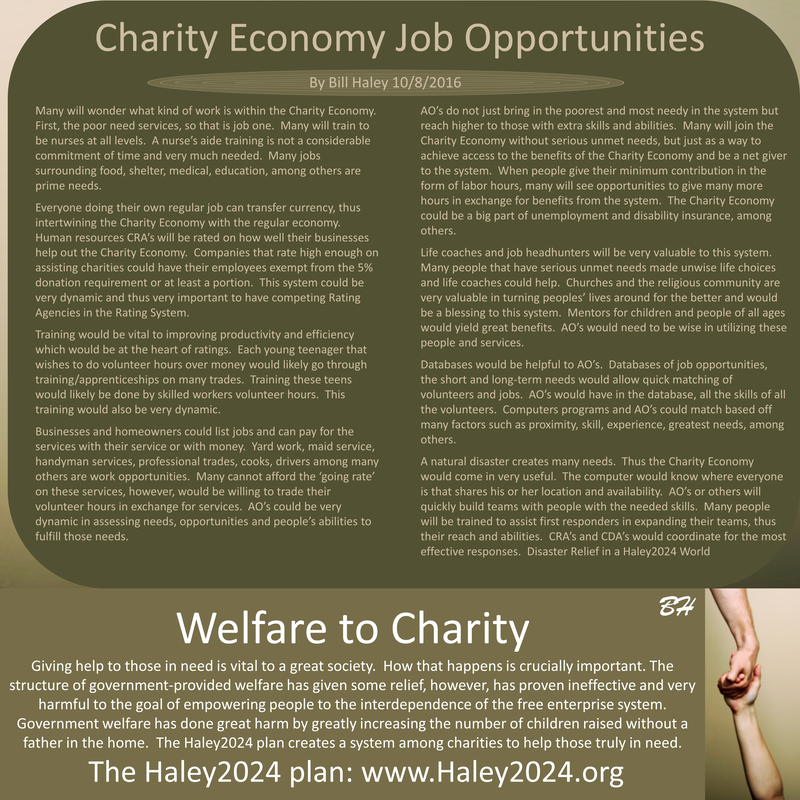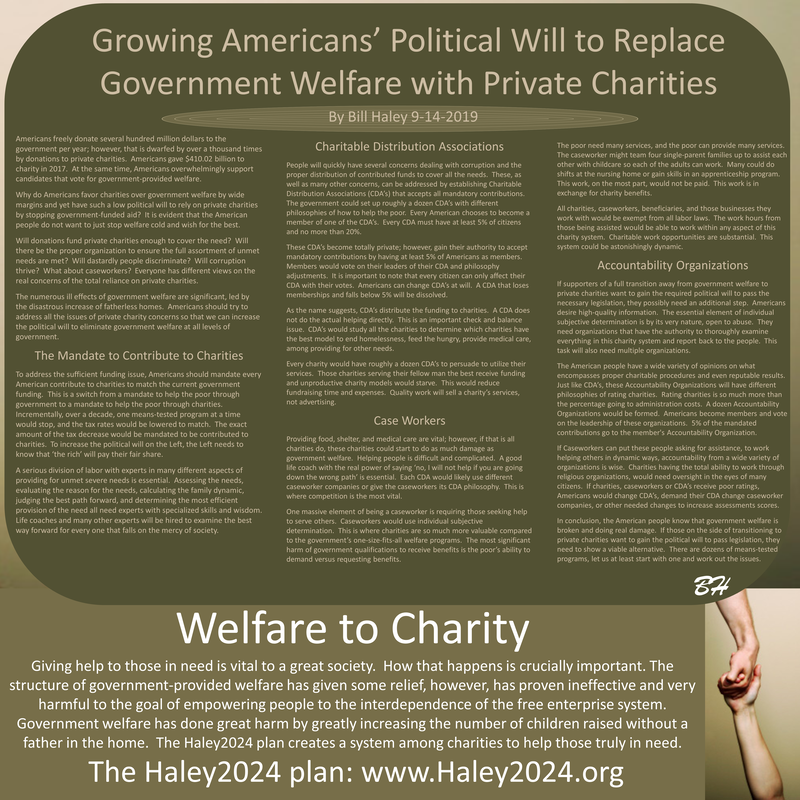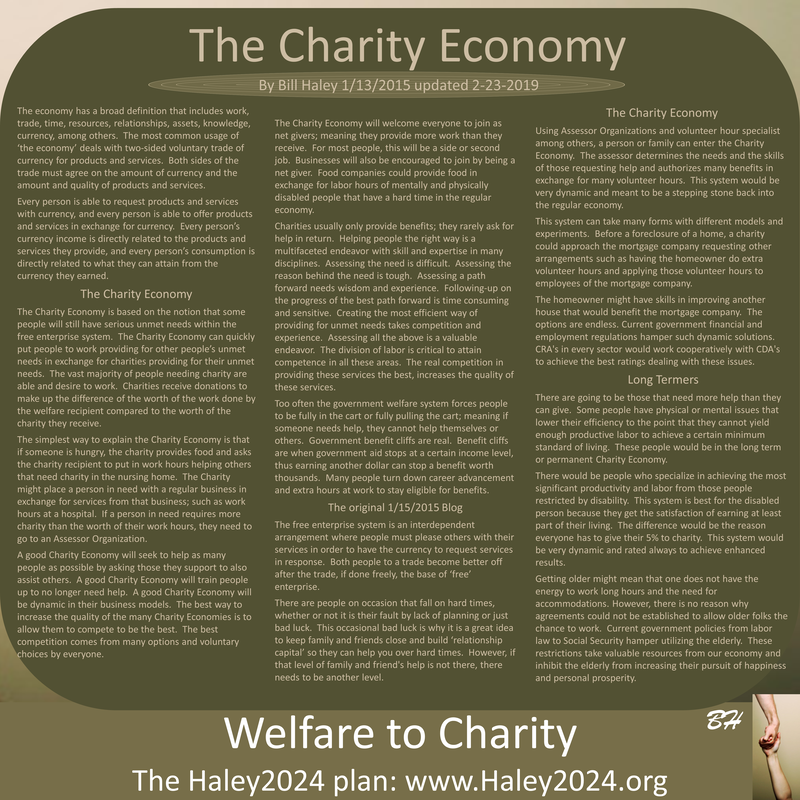The Charity Assessor Organization (AO) Sector
The CRA Structure
•All government welfare ceases, transitioning to the Haley2024 Charity System.
•It is essential to understand the complete CRA Structure to understand the Charity System. •The Charity System has three Sectors. •It is vital to comprehend how the AO Sector will interact with the Charity Sector and the Charitable Distribution Association Sector. •The Family Law Sector and the Religion Sector are likely going to be intertwined with the entire Charity System; however, it is vital for proper checks and balances that all the Sectors are legally separated. •Most of the 30 Sectors will interact with the Charity System. •The CRA Structure establishes the vast percentage of authority within these Sectors at the CRA level. •The Sector Board level will have little authority within the Charity System Sectors. •There are local, state, and federal AO’s. It is likely that assessor businesses will coordinate with all three levels. |
The Rating System
•The reader should have a good understanding of the Rating System.
•Every bullet point could have the statement that the Rating Agencies (RA’s) will give high-quality information from a wide variety of perspectives on that issue. •The sunlight of high-quality information from a wide variety of perspectives disinfects the Charity System. •Rating Floors are ideal to stop abuse, self-dealing, and fraud. •Many resist helping others because they do not want to entrap the poor in a destructive lifestyle or have the poor ‘take advantage’ of them. The Rating System will give the necessary information to know who is doing it right. •Many Rating Agencies would rate all these AO’s, and everyone would decide what Rating Agencies they would trust. •Ratings inform people regarding which CDA to fund with their contributions. |
Subjective Determination
•The current government monopoly control of welfare cannot use subjective determination. That is deleterious.
•It is vital that every part of the Charity System, along with most Sectors, who have people with jobs formerly in the purview of government, have subjective determination. •The very nature of subjective determination requires competition for those services formerly in the purview of government. •The full CRA Structure was built on this notion of removing the government’s monopoly power. •Taking away the government’s monopoly control of regulations in most areas of law will lower ineffective and harmful regulations. •Using individual subjective determination is essential to stop the game playing or abuse in the system. |
The AO Basics
•Either side may decide to end any association at any time and for any reason after contractual obligations. This is a universal Haley2024 value.
•Those that request ‘net-help’ must choose a CDA, and a CDA may accept. •Net-help means someone is asking for more help than the value they can offer in labor hour services. •The CDA must assign those seeking net-help to an Assessor Organization. •People needing help are free to ask another CDA, thus Assessor for help. •Assessors are the case managers of those that need net-help. •Working closely with the Family Law CRA’s, Religion CRA’s, and Identity CRA’s, assessors will look into a person’s life to properly assess the best path forward. |
|
•Often, people need help because they made bad life decisions. Because they are falling on the mercy of society for help, AO’s can make certain moral and lifestyle requirements to stay within that CDA.
•Assessors can also require work and education to stay within that CDA, as determined by the Assessor. •All funds earned will revert to their CDA. •Assessor Organizations will likely utilize the Charity Economy for both work requirements and benefits, seeking the highest level of interdependency. •Assessors will coordinate benefits from charities that its CDA funds. •This system does not restrict religion from any part of the system. However, individuals will always have non-religious options. •70% of AO’s can subjectively determine that a person is unable to satisfy CRA and RA fees and exempt them. The burden will be proportionally spread across all CRA’s and RA’s. |
The Competition of a Dozen AO’s
•Roughly a dozen CDA’s will be in competition for the contributions of the American people and businesses.
•That competition means that CDA’s are limited to helping roughly the same percentage of those in need as the percentage of Americans contributing to their CDA. •AO’s will sell their services to these CDA’s. •Each CDA will likely contract for the services of many assessor businesses. •CDA’s will partner with Assessor businesses that match their philosophy of helping those in need. |
|
•Each assessor business must be regulated by an Assessor Organization CRA. Assessor Organization CRA’s are called AO’s.
•Reputations of different Assessor Organizations (AO’s) and their philosophy of helping the poor, will become well known. •Those CDA’s that have low ratings with AO’s would see their donations fall, and those with higher ratings would gain more donations. •Lower-rated CDA’s and their affiliated AO’s and charities would have to turn away those in need for the lack of money. •More of those in need will have to go to the higher-rated, thus better-funded, CDA’s and AO’s. •Charities will trust certain assessors that have an excellent history, thus assuring that their work, service, and help are genuinely ‘helping’ those in need. |
Different Roles of an AO
•Wise people in every part of the Charity System will use individual subjective determination.
•However, these roles of the AO are perhaps the most essential area in need of individual subjective determination. •AO’s will likely have different people specializing in each of these roles. •An AO will assess the financial situation of the person or family in need. •The AO will assess the needs. •The AO’s will direct benefits offered by charities. •The AO will assess the reasons the person or the family fell into need. •The AO will determine the best path to independence for each person or family. •The AO would periodically assess and advise. |
The Tools of an AO
•Every AO would decide how deeply and discretely they will dig into a person’s life to determine the best path forward.
•A person’s identity business regulated by an Identity CRA would have ownership records, criminal records, medical records, credit reports, education records, licenses, and other documents, thus an excellent resource for AO’s. •Only a few people at AO’s will need to dig into a family situation and determine whether they are on the right path out and not being entrapped in the system. •The Charity Economy run by the Charity CRA’s would be a practical tool for the Assessors to utilize. •The assessor business could set a person in need up in the Charity Economy, where they would get benefits and also work to the greatest extent possible. |
|
•Unemployment and disability insurance, as well as the failure to pay loans, would likely have mandatory labor hours in the Charity Economy built into the contract; thus, AO’s will have many skilled people to utilize.
•AOs have the authority to require anyone they are assessing to work and achieve an education. • The AO could partner with a person’s Family Law CRA to bring two or more families or people together for mutual assistance. •The AO could utilize the services of religious organizations. •The Education CRA’s would likely offer many free to low-cost options. |
|
•Many businesses would pay their mandatory contributions with services from their business; thus, AO’s would have thousands of tools.
•Prisoners in the Haley2024 Prison Reform would be mandated to work many hours, bringing many labor hours into the system. •Charity Assessor Organization App’s will likely develop to match services and charitable hours quickly and efficiently. •There is so much that needs to be done to help the poor, and AO’s would specialize in gaining work hours from those in need. |
The Goals of an AO
•There would be different opinions about what outcomes are the most desired.
•Every AO would publish their mission statement and goals as part of the philosophy of how they will help the poor. I believe most Americans would be astonished to learn the substantial differences. •Some Americans would be horrified that people want to address a person-in-need’s lifestyle choices in order to offer charity. Some people are shocked by the idea that we should not address those concerns. |
|
•Some Americans would be appalled that people do not want their charity dollars funding a smoker’s lung cancer treatment. Some people are dismayed by the notion that we should.
•Some Americans would be aghast that AO’s would ask those in need to put labor hours into the Charity Economy. Some Americans are angry that they are working 60 hours a week, making as much money as someone’s welfare check derived from zero labor hours. •There are some people with the goal of getting as many people in the cart as possible. In contrast, others concentrate on increasing the people pulling the wagon. • The goal is an independent, moral, and healthy lifestyle. However, that looks different for many people. |
The Benefits to Those in Need
•The AO’s will coordinate with charities that will meet the serious unmet needs.
•The AO’s will give those seeking help the pride of ‘earning’ what they receive, at least to the greatest degree possible. •The contributed funds can reach further. •AO’s would hire life coaches. •The person in need, gains work experiences and skills, which is beneficial in acquiring or advancing in a job in the regular economy. •Total independence is not achievable for everyone. However, Assessor Organizations would specialize in maximizing pride, worth, work, and interdependence. |
Assessing AO’s
•Knowing an assessor from an AO they trust has done a complete evaluation and that those needing help are on the right path, will create trust with people contributing money.
•Many charities would help families over a certain rating level and only from Assessor Organizations that, within reason, match their philosophy. •These Assessment Organizations would be rated on how their recommendations result in as much independence as possible. •There would be different models of charities and how to assess families dynamically. •The many AO’s will have their own method of assessing those in need and informing charities of the best path forward. |

